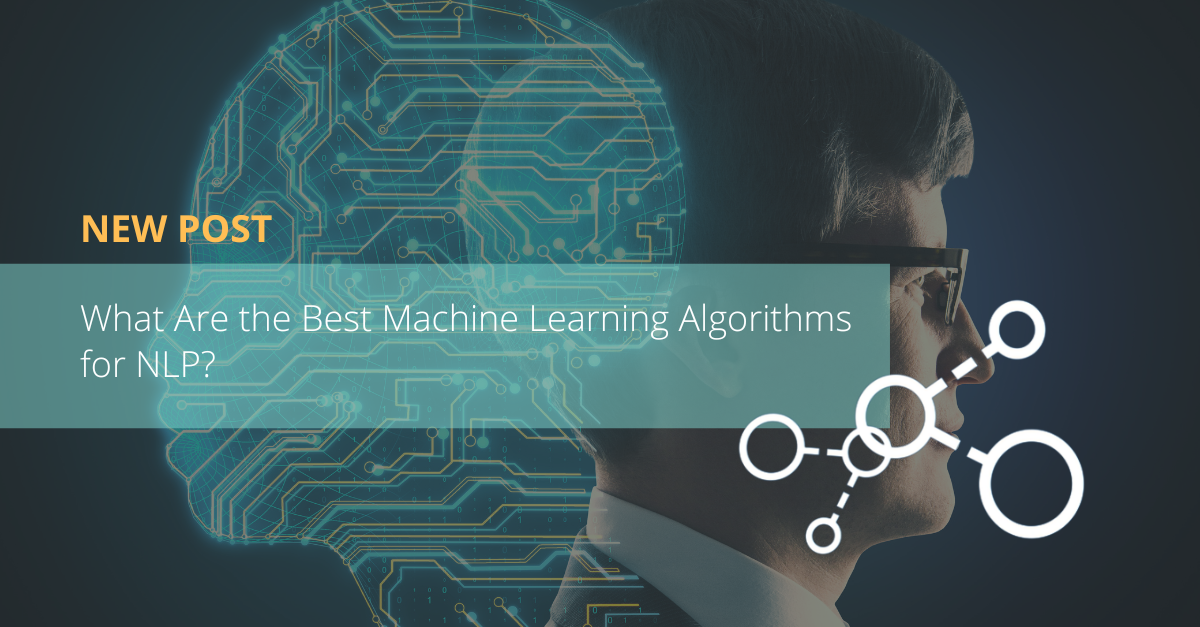
What Are the Best Machine Learning Algorithms for NLP?
Nowadays, natural language processing (NLP) is one of the most relevant areas within artificial intelligence. In this context, machine-learning algorithms play a fundamental role in the analysis, understanding, and generation of natural language. However, given the large number of available algorithms, selecting the right one for a specific task can be challenging.
In this article, we will focus on the best machine-learning algorithms for natural language processing. We will examine the most commonly used algorithms, their performance, advantages and disadvantages, and how they can be applied in different specific NLP tasks.
First, we will explain what machine learning algorithms are and why they are important in natural language processing. Then, we will describe the following algorithms in detail: logistic regression, decision trees, random forest, naive Bayes, support vector machines (SVM), artificial neural networks, word embeddings, and transformers.
Moreover, in the section on criteria to consider when choosing a machine learning algorithm for NLP, we will detail the aspects that should be considered to select the right algorithm, such as the specific NLP task, training time, accuracy, and complexity.
To summarize, this article will be a useful guide to understanding the best machine learning algorithms for natural language processing and selecting the most suitable one for a specific task.
What are machine learning algorithms?
Machine learning algorithms are mathematical and statistical methods that allow computer systems to learn autonomously and improve their ability to perform specific tasks. They are based on the identification of patterns and relationships in data and are widely used in a variety of fields, including machine translation, anonymization, or text classification in different domains.
Related content:
What is a machine learning algorithm for?
Machine learning algorithms are essential for different NLP tasks as they enable computers to process and understand human language. The algorithms learn from the data and use this knowledge to improve the accuracy and efficiency of NLP tasks. In the case of machine translation, algorithms can learn to identify linguistic patterns and generate accurate translations.
Why are machine learning algorithms important in NLP?
Machine learning algorithms are important in natural language processing because they enable the automation of tasks that previously required human intervention. This reduces the time and costs associated with text translation and anonymization, making these services more accessible to businesses and individuals. Furthermore, machine learning algorithms can improve the quality of results, as they can learn from data and adjust their processes to improve accuracy and efficiency in NLP tasks.
How to boost your business with natural language processing (NLP)
Machine learning algorithms for NLP
Machine learning algorithms are fundamental in natural language processing, as they allow NLP models to better understand human language and perform specific tasks efficiently. The following are some of the most commonly used algorithms in NLP, each with their unique characteristics.
Logistic regression
Logistic regression is a supervised learning algorithm used to classify texts and predict the probability that a given input belongs to one of the output categories. This algorithm is effective in automatically classifying the language of a text or the field to which it belongs (medical, legal, financial, etc.).
Decision trees
Decision trees are a supervised learning algorithm used to classify and predict data based on a series of decisions made in the form of a tree. It is an effective method for classifying texts into specific categories using an intuitive rule-based approach.
Random forest
Random forest is a supervised learning algorithm that combines multiple decision trees to improve accuracy and avoid overfitting. This algorithm is particularly useful in the classification of large text datasets due to its ability to handle multiple features.
Naive Bayes
Naive Bayes is a probabilistic classification algorithm used in NLP to classify texts, which assumes that all text features are independent of each other. Despite its simplicity, this algorithm has proven to be very effective in text classification due to its efficiency in handling large datasets.
Support Vector Machines
Support Vector Machines (SVM) is a type of supervised learning algorithm that searches for the best separation between different categories in a high-dimensional feature space. SVMs are effective in text classification due to their ability to separate complex data into different categories.
Artificial neural networks
Artificial neural networks are a type of deep learning algorithm used in NLP. These networks are designed to mimic the behavior of the human brain and are used for complex tasks such as machine translation and sentiment analysis. The ability of these networks to capture complex patterns makes them effective for processing large text data sets.
More information:
Word embeddings
Word embeddings are used in NLP to represent words in a high-dimensional vector space. These vectors are able to capture the semantics and syntax of words and are used in tasks such as information retrieval and machine translation. Word embeddings are useful in that they capture the meaning and relationship between words. Artificial neural networks are typically used to obtain these embeddings.
Transformer
The transformer is a type of artificial neural network used in NLP to process text sequences. It is used in tasks such as machine translation and text summarization. This type of network is particularly effective in generating coherent and natural text due to its ability to model long-term dependencies in a text sequence.
Unlike RNN-based models, the transformer uses an attention architecture that allows different parts of the input to be processed in parallel, making it faster and more scalable compared to other deep learning algorithms. Its architecture is also highly customizable, making it suitable for a wide variety of tasks in NLP. Overall, the transformer is a promising network for natural language processing that has proven to be very effective in several key NLP tasks.
Criteria to consider when choosing a machine learning algorithm for NLP
Although there are many machine learning algorithms for natural language processing, it is important to choose the right algorithm for each specific NLP task. To do so, a number of important criteria need to be taken into account:
Specific NLP tasks
The choice of algorithm must be tailored to the specific task to be solved. For example, classification algorithms are useful for categorizing documents, whereas clustering algorithms are suitable for topic identification. See all NLP solutions
Training time
Training time is an important factor to consider when choosing an NLP algorithm, especially when fast results are needed. Some algorithms, like SVM or random forest, have longer training times than others, such as Naive Bayes.
Related article:
Human-in-the-loop (HITL); making the most of human and machine intelligence
Accuracy and complexity
Accuracy and complexity are other important factors to consider. A more complex algorithm may offer higher accuracy but may be more difficult to understand and adjust. In contrast, a simpler algorithm may be easier to understand and adjust but may offer lower accuracy. Therefore, it is important to find a balance between accuracy and complexity.
Machine learning algorithms at Pangeanic
At Pangeanic, we use various machine learning algorithm architectures to address different tasks in natural language processing. These are some examples of algorithms:
For machine translation, we use a neural network architecture called Sequence-to-Sequence (Seq2Seq) (This architecture is the basis of the OpenNMT framework that we use at our company).
For estimating machine translation quality, we use machine learning algorithms based on the calculation of text similarity. One of the most noteworthy of these algorithms is the XLM-RoBERTa model based on the transformer architecture.
For text anonymization, we use Spacy and different variants of BERT. These algorithms are based on neural networks that learn to identify and replace information that can identify an individual in the text, such as names and addresses.
Finally, for text classification, we use different variants of BERT, such as BERT-Base, BERT-Large, and other pre-trained models that have proven to be effective in text classification in different fields.
To summarize, our company uses a wide variety of machine learning algorithm architectures to address different tasks in natural language processing. From machine translation to text anonymization and classification, we are always looking for the most suitable and efficient algorithms to provide the best services to our clients.




